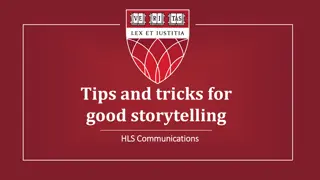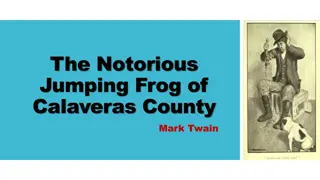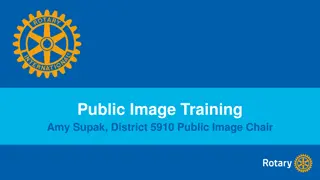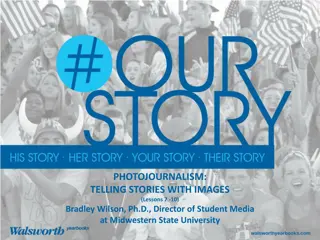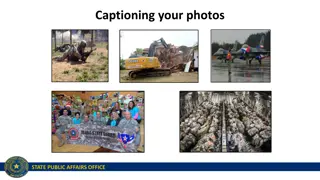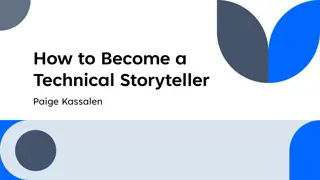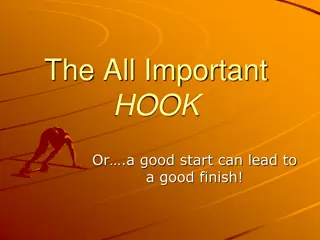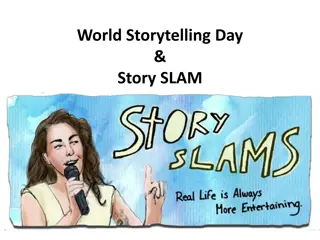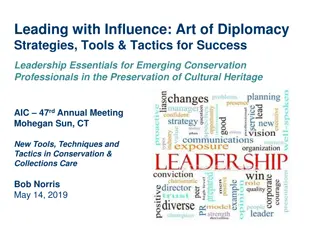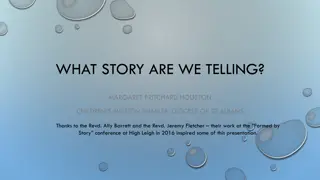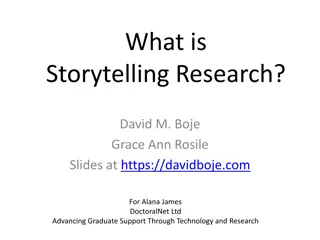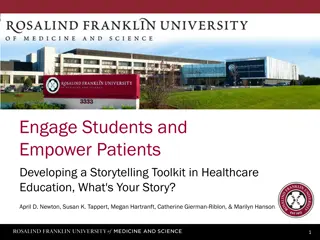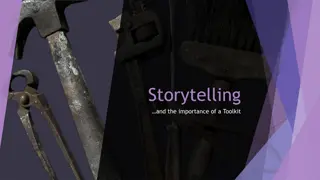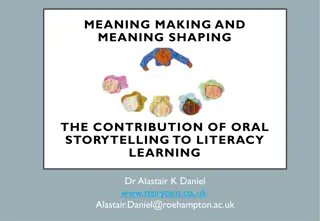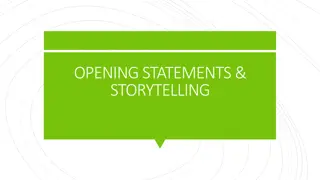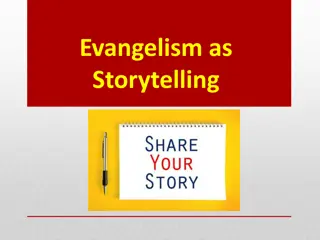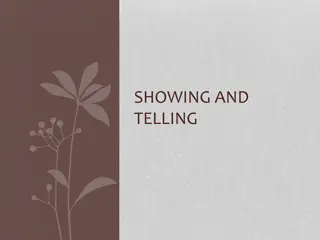Mastering the Art of Storytelling for Impactful Leadership
Effective leadership involves skillful storytelling that engages others in a compelling narrative. By understanding the key elements of a good story and where to focus energy, leaders can create impactful stories that inspire change and sustain improvements. Utilizing imagery and emphasizing different aspects of a story can enhance its resonance and influence.
Download Presentation

Please find below an Image/Link to download the presentation.
The content on the website is provided AS IS for your information and personal use only. It may not be sold, licensed, or shared on other websites without obtaining consent from the author. Download presentation by click this link. If you encounter any issues during the download, it is possible that the publisher has removed the file from their server.
E N D
Presentation Transcript
Using Imagery and Stories for Engagement and Impact The age old art of storytelling is one of the most effective tools leaders can use. But they need to pick their stories carefully and match them to the situation. Harvard Business Review
Whats Your Story? Analysis of data is not sufficient ..even the Harvard Business Review agrees! Being able to tell a compelling story of your work is critical to engaging others in sustaining improvements. sharon@sharonbenjamin.com 2
5 Elements Every Good Story Must Have 1. It must be about a person or group who s struggles we can relate to. 2. The stakes are high and something has changed that compels the characters to change what they are doing. Typically the opening of the story sets this up. 3. Obstacles produce drama, frustration and conflict. 4. A turning point -- the characters can no longer do things as they have in the past. 5. A resolution: they lived happily ever after sharon@sharonbenjamin.com 3
What to Emphasize in Different Kinds of Story Not all stories have the same purpose to make our point clear, we can change our Focus Depth Methods (adapted from http://blogs.hbr.org/2014/05/10-kinds-of-stories-to-tell-with-data/). sharon@sharonbenjamin.com 4
Focus Focus of your story may be What You Did Why You Did It How to Address an Issue sharon@sharonbenjamin.com 5
What Why How What stories are like reporting stories they simply tell what happened, less powerful for creating change. Whystories go into the underlying factors that caused the outcome, higher power. Howtoaddress the issue stories explore various ways to improve the situation identified in the what and the why stories, higher power. A really complete story may have all of these focus elements. sharon@sharonbenjamin.com 6
Where to Put Your Energy Focus on getting fast agreement on the what Then spend more time and energy on why and how Hint: Everyone involved in creating and telling the story use the same data. sharon@sharonbenjamin.com 7
Depth Your story may be short, sweet and powerful Like a CSI episode short investigation, happy ending. or Eureka stories, often long, analytically-driven searches for a solution to a complex problem. When you solve it, you want to yell, Eureka! These types of stories are typically long, important, and expensive. Both types of stories can be successful but be careful to notice your audiences tolerance and patience ..and calibrate your storytelling accordingly. sharon@sharonbenjamin.com 8
Methods You Used Finally, some stories can be about the methods you used Correlation Causation But don t confuse correlation with causation! sharon@sharonbenjamin.com 9
How Does This Apply to You? Introduce the main characters who s involved? Try to pick a main character to open the story with a nurse, a patient . Set the stakes why does this matter? What s changed that requires a different course of action today than in the past. Tell the truth about obstacles, barriers, conflict, frustration this is where we can learn from you! It s OK to be confused and messy at this stage. Tell us the ending: we reduced UTIs and improved client s quality of life. sharon@sharonbenjamin.com 10
How Does This Apply to You? Start telling your story notice what kind of story you are telling .. sharon@sharonbenjamin.com 11
But wait theres more! Great stories have catchy titles -- A good title is usually short, punchy and captures the mood and outcome of the story. A good title helps listeners REMEMBER the important meaning of the story sharon@sharonbenjamin.com 12
Write Your Story 10 Minutes! Either by yourself, or with your group, write your story on the form in your packet using the tools we ve just discussed sharon@sharonbenjamin.com 13
Jumpstart Storytelling with Thanks to Seth Kahan Introduction 5 minutes Go to your group number huddle up knee-to-knee with your group 1st Story Table: 20 minutes Each person shares their story in 120 seconds (2 minutes). Introduce yourself, set up the stakes, what, why and how did things happen, what s the resolution and your story title. Leave chairs and ONE person in each group. Everyone else go find a new group. 3 minutes 2nd Story Group: 12 minutes New small groups are formed - all new faces. Storytelling repeated. Same story, different listeners, tell your story in 2 minutes or less. Clusters & Chains: 5 minutes Recall the story that most captured your attention. Stand up and find that storyteller and put your hand on that person s shoulder. Those with most hands on their shoulders (i.e., the most people have selected them) will be asked to share their stories with the whole - they are the group storytellers. Plenary Storytelling: 10 minutes The group storytellers tell their stories. Each story is followed by 20 seconds of silence, rather than applause. Audience encouraged to quietly notice how the story engages them. sharon@sharonbenjamin.com 14
For More Information http://storytellinginorganizations.com/articles/ www.stevedenning.com Steve Denning is a well-known organizational storytelling expert http://www.visionaryleadership.com/site/ Seth Kahan writes a regular column on storytelling for Fast Company. His Jumpstart Storytelling technique can be found at: http://www.visionaryleadership.com/free-resources/culture-the-power-of- storytelling-to-jumpstart-collaboration.php#sthash.9gsc7x7U.dpuf sharon@sharonbenjamin.com 15



